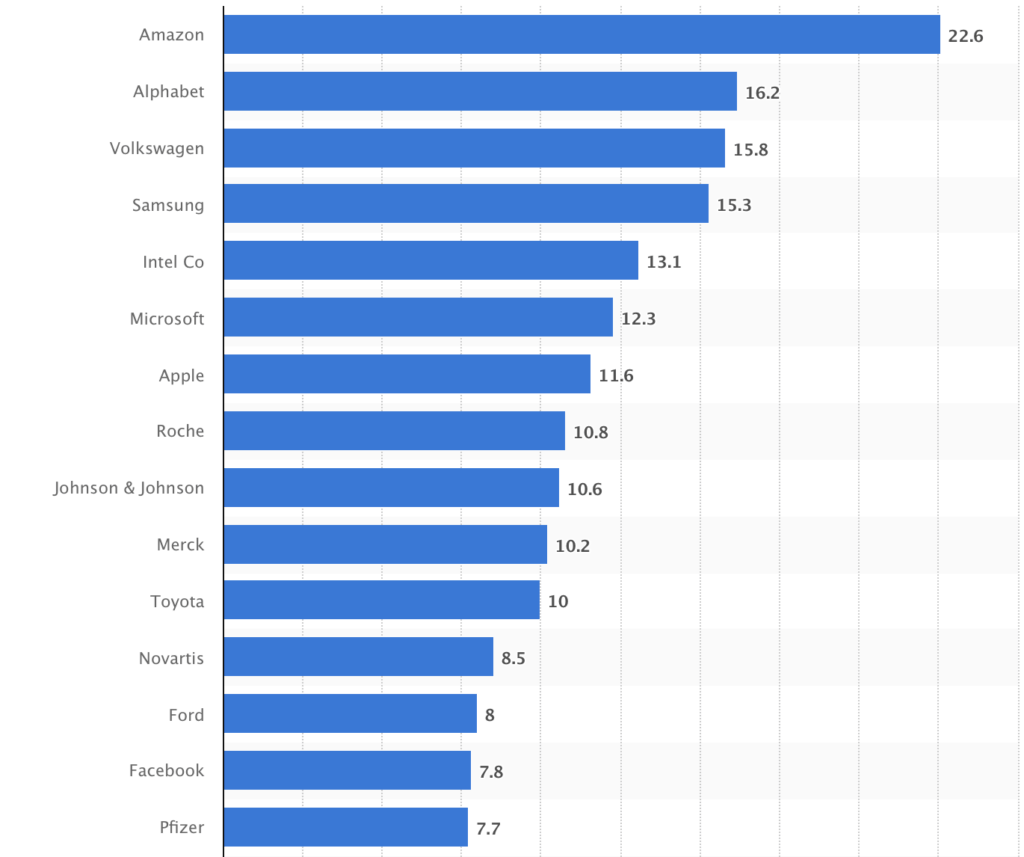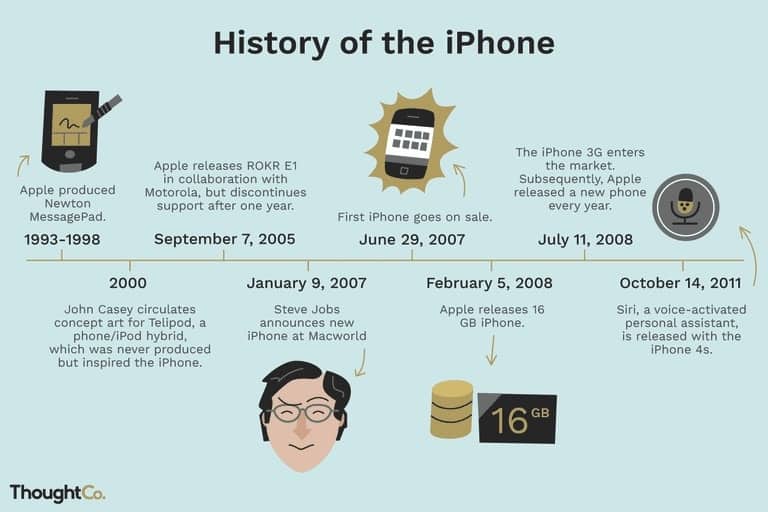Successful product innovations signify different things to different folks. Some people tend to think in terms of a product which is ‘first of its kind,’ first, unique. Naturally, few companies reach innovation at that point. And such revolutionary innovation is not necessarily more important than the incremental improvements to existing services and products, which far more businesses undertake. Indeed, since approximately 1970 there seems to have been a constant change towards product improvement rather than new products.
The world is getting more flat every day as the globalization and technological progress are hitting with a more significant impact. Every day, there is another company introducing innovation, and new technology shows up and takes us all one step forward into the digital world.
This is the need of the day for every business to hold its grounds firmly in today’s extremely aggressive and competitive era by introducing innovative products and services to their offerings.
Thomas Edison once said –
There’s a way to do it better—find it,”
and he was and still is right. If the team thinks, “yeah, we made it,” it’s probably the beginning of the end. Product innovation is extremely crucial nowadays. There are number of companies which understand it

What does product innovation mean?
Product/service innovation is the result of introducing a new way to solve the customer’s problem – through a product or service development. It is necessary to define the difference between invention and innovation. The invention is a new idea, a new business model or a new concept. Innovation is the commercial application and exploitation of the idea.
Product innovation can happen in three different forms.
1) The development of a new product, such as the Apple Watch or Amazon Echo.
2) An enhancement of the existing product, such as an increase of the battery in the new Tesla model.
3) A new feature to a current product, such as Face ID in Apple products.
Drivers of product innovation might be competitors, changes in customer expectations, or outdated product design. Product innovation is usually noticeable by customers quickly and should result in a more significant growth (demand for a product, willingness to subscribe to a service, pre-enrollments number).
Examples of successful product innovations
Amazon Echo buds, first truly wireless earbuds from Amazon. They also have incredible Bose quality noise reduction technology and support Siri as well as Alexa – It’s is a great example of a new product launch.

The iPhone 11 Pro camera comes with a trio of rear-facing cameras, including the familiar wide-angle and telephoto lens modules, as well as a new ultra-wide camera – product enhancement

Microsoft introduced an innovative new controller for Xbox One and PC designed specifically to make gaming more accessible for those with disabilities – product enhancement

Product innovation focuses on discovering and delivering a powerful and compelling value proposition, which navigates a customer focus.
This is where companies compete.
Where Apple and Samsung do arm-wrestling, where Toyota and Ford try to bring new technology, it’s always about delivering a unique value proposition that will make the customer happy.
Reach out to Skuza Consulting for thoughtful product strategy and development services.
Product innovations require collaboration
The myth that lone genius makes product innovations happen isn’t true certainly. Reality is far more complicated. Talent and inspiration are necessary, but not enough to build successful product innovations.
To create, launch, or redesign a product requires the collaboration of many individuals with a variety of skills:
- Engineers, developers and technology architects must envision and design the product, using customer input, markets situations, future trends, and accessible technologies
- Marketing specialists, gurus, and ninjas must assess the product’s potential and help shape their unique features
- CFOs and financial forces must analyze the cost of marketing it and determine a competitive price, consider and project margins,
- Manufacturing leaders must decide how to make the product in volume, what will be the acceptable scale and how to upgrade products in the future
- Lawyers must assess how to protect the product, patent IP before other companies start to play copycats game
A wide range of ideas and views are necessary to generate vast concepts and then, hopefully, turn them into working products, which, hopefully again, should bring growth and traction.
Product innovation for most companies depends upon the individual and collective expertise of employees, but not only, partners, experts, consultants, and professors. In the new era of fierce competition, businesses must be cross-functionally excellent than functionally excellent.
Silos and lack of partnership
I mean, silos can kill product innovation, even if genius has a fantastic idea to share. Moreover, best companies use cross-cutting actions on significant issues in order to challenge assumptions and open up the organization to new thinking. For this reason, open innovation became so important in product innovation.
In the 2019 Digital Business Report, MIT SMR and
Companies that are strong in realizing the high ROI from their product innovations know how to match technological developments with expertise in marketing, advertising, manufacturing, distribution, human resources, customer relationships, digital positioning (SEM, SEO) and social media presence. To lead these expertise development efforts, cross-functional teams in silos free environment, either formal or informal, need to be developed.
Gary Pisano, a professor at Harvard Business School, wrote once in his article titled “The Hard Truth About Innovative Cultures.” “Disciplined experimentation is a balancing act; as a leader, you want to encourage people to entertain unreasonable ideas and give them time to formulate their hypotheses… [but] Scientific and business judgments are required to figure out which ideas to move forward, which to reformulate, and which to kill.” If you want to run product innovations effectively, all these thoughts need to be strongly considered. The company’s boss, or a smart engineer or a fantastic marketing executive, can’t do it by himself. Product innovations are always a team sport, and it requires a wide variety of different individuals to bring growth and traction to the company eventually.
This is the Industrial Team in Apple, which introduces a lot of product innovations in Apple Watch. These pictures don’t show engineers, developers, and executives who contributed to the best smartwatch on the market.

Only a great process can deliver a great, innovative product
Some companies take an approach to innovation that could be called the “Innovation Island” type. The concept is that businesses invest time, other resources organizing sessions, quite often facilitated by others, where various people come together for a few days to brainstorm, think creatively, play games or deliberate about concepts that are for many different reasons interesting to the company. These meetings are often described as being highly creative, inspirational, and energizing. People leave excited and motivated by the possibilities that emerge from the workshop. Afterward, either nothing happens, or the concepts can’t find executives’ attention, budget – generally, they can’t be pushed forward.
According to Dean Keith Simonton, innovation demands that innovators involve in an evolutionary process in which they experiment with many possibilities without fully knowing what will be the outcome. Simonton’s theory does not suggest that inventors are working entirely in the dark; ideas are not generated in complete ignorance of the ecosystem.

“Innovation island” tactic can’t create real product innovations because it’s “in the dark” approach. it doesn’t connect necessary players, to move the concept from early-stage to prototyping, testing and finally the market-fit point. Eventually, it doesn’t bet on the process but rather on today’s excitement.
To master the resulting and benefit from product innovation, systematic and disciplined innovation has become a core focus for high performing companies. Product innovations is a management process that requires specific tools, techniques, and discipline.
The product innovation process describes the systematic conversion of current and new concepts into marketable solutions, from idea generation and idea evaluation to implementation and product growth.
In addition to the innovation process, innovation management must also include the strategy, organizational structure, external relationship terms and conditions, and innovation culture of a company. These areas are closely interlinked and require appropriate synchronization when it comes to the compatible design of sustainable product innovations in the company.
Product innovations criteria
1. Powerful value proposition
In order to deliver successful product innovations, the team needs to design a compelling value proposition. Product innovations often don’t produce the desired results because they don’t wipe out jobs that customer needs to do regularly. If a person has to input a password into the computer to unlock it, the product requires more work, than face-scanning solutions. The more jobs the algorithm performs for the customer, the better. So, if product innovations don’t remove the customer’s challenges in an obvious way, they will not bring growth to the company (e.g.Google Wave or Amazon Fire Phone with 3D face scanning technology).
Related: “Validating and Designing Value Proposition”
2. Strong differentiation from the competition
A product innovation needs to differentiate from the competition and be distinctive. Uber in Central Eastern Europe was the first business that let people shut the can door and forget about cash or card payment. It offered such a strong differentiation that people kept saying: “finally you shut the door, and the app pays for the service”.
3. Easy to use by early adopters
Early adopters play a vital role in introducing innovative products to the market and turn them into successful product innovations. These people go and try first. Mark Zuckerberg made it simple for college kids to upload a photo and make the experience of sharing seamless. At the same time Segway introduced such a complicated product, which requires so much explanation, that the company almost disappeared.
4. Low entry barrier
It’s hardly ever when customers are introduced to something completely new. Most of the people own a smartphone, have an FB account or upload credit card credentials to a grocery store. Product innovations need to be easy to test and easy to pick up. Consider Tesla cars with limited access to power charges. Tesla offers a fantastic financial program to get the car, but if your country is not on their chargers map, the customer will not buy the car. If you think about software as a service company, like Salesforce or Buffer. The best players always offer a freemium model, because they understand that product innovations require a low entry barrier, and providing a service for free, is one of the best moves.
5. Legal framework
Thirteen years ago, an American company introduced the energy drink “Cocaine.” The value proposition they created offered three times the caffeine content of Red Bull. Quite compelling for gamers, truck drivers, or soldiers. FDA quickly took the product off the shelves because of illegal drug glorification. Product innovations often enter new areas of our life because businesses want to introduce something new. At the same time, the company needs to make sure that the product will not be suspended. It influences growth and traction obviously.
6. Long and mid-term trends
Many successful product innovations often require years after market launch to mature and bring significant ROI. Long and mid-term trends should also be taken into account when assessing revenue prospects to prevent product innovation from being displaced by another development. A great example could be Artificial Intelligence which aims to develop apps automatically. Many startups work on AI-powered tech, which can write the code by itself. It influences the software house industry a lot, because of these service-based companies, trade people’s time and knowledge for money. If AI takes off, it will disrupt the software houses business models, so does it make sense to grow software house and hire more people? Wouldn’t it be better to bet on product innovations and automate the apps building process?
If you want to subscribe to The Innovation Letter and get the next article into the mailbox, please navigate here and Subscribe.
7. Integration into the current product portfolio
The introduction of product innovations to the market increases the risk that they will cannibalize existing products which cost margins and reduce the value of the company. Companies should avoid cannibalization, usually. However, there are also advocates of “preventive cannibalization.” Steve Jobs, who said during the iPhone introduction: “If you don’t cannibalize yourself, then someone else will do it,” is an excellent example of preventive cannibalization. Afterward, iPhone swallowed iPod, but it doesn’t stop Apple from being a trillion dollars value company.
8. Scalability and integration
Is the innovation capable of being scaled? Can it be duplicated with consistency, meet standards, and be replicated in such a way that it can massively
Conclusion
The truth is that successful product innovations are released

